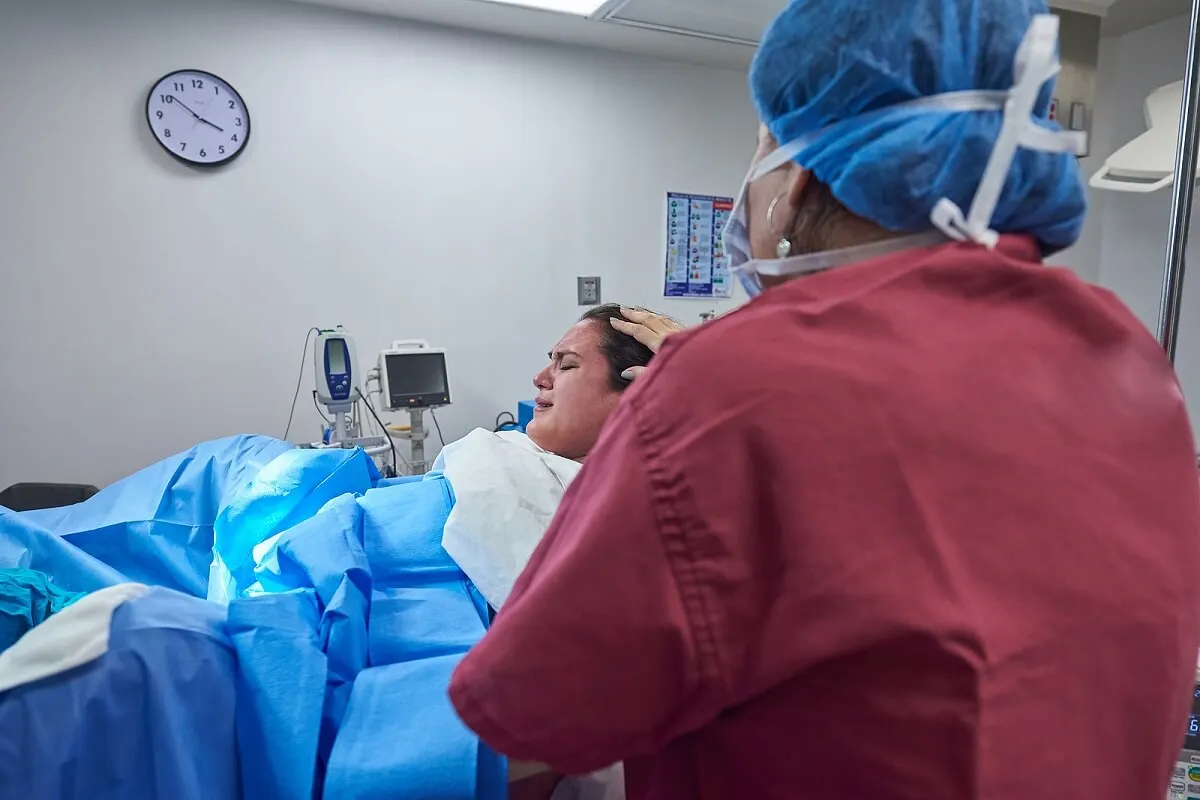6 Types of Childbirth and Their Characteristics


Written and verified by the doctor Leonardo Biolatto
Have you ever thought about the fact that there are actually many different types of childbirth? The advance of medicine has also contributed to the diversity and understanding of the possibilities that exist in this process.
In the same way, a greater awareness of what gestation and the woman’s body mean, from a philosophical point of view, have modified medicalized interventions considerably. This has led to the emergence of variants based on natural methods, and with as few people involved as possible.
6 types of childbirth
We’re going to focus on 6 types of childbirth and explain them to you. This classification is somewhat artificial in certain aspects, as strictly speaking, the baby can only be delivered in two ways: vaginal or abdominal (cesarean section).
However, the vaginal method doesn’t have a single modality, nor does the cesarean section. Let’s see, then, the characteristics of each form.
Continue reading: Natural Childbirth After C-Section: Is It a Good Idea?
1. Vaginal childbirth with medical intervention
As its name indicates, this type of childbirth happens with the baby coming out through the mother’s vagina. It’s the natural way of delivery, both of the child and of the attached structures, such as the placenta. Let us remember that the incision made for a cesarean section is a surgical procedure.
The medical intervention has to do with certain therapies and protocols that are applied to reduce the risk of complications. This is something that the medical associations of each country and the ministries of health have in place to reduce maternal and neonatal mortality.
The delivery takes place in a controlled hospital environment, with an interventional team that usually consists of a physician, midwife or obstetrician, nurses, and neonatologists. A series of established steps are followed and parameters are often monitored, with the possibility of regional anesthesia, for example.

2. Natural childbirth
Natural childbirth is a type of birth that follows the vaginal route, but based on a principle of minimal intervention by people such as the medical team. This doesn’t mean that safety is compromised, but the aim is not to deliberately interfere.
It’s common for a figure called a doula to participate. These are people who have been trained to accompany the process in a special way. They assist the mother in her movements, without the use of analgesic or anesthetic medications, prevent the woman from lying down all the time, and give her freedom in her decisions.
Several countries have legislated this care under a law on humanized childbirth. This law establishes a mother’s right to opt for this type of approach that is centered on them, and not based on medical impositions that could constitute some form of obstetric violence.
3. Water birth
A modality that has gained ground in recent times has been the water birth. It consists of the expulsion of the baby vaginally in a liquid medium. For this purpose, the mother remains submerged in a pool designed for this purpose.
The scientific basis is valid and corroborated. The child passes from one liquid to another and the woman also benefits from hydrotherapy, which reduces the pain of the contractions, as well as the effort of the expulsion phase, by counteracting the gravity of other positions.
This type of delivery can be performed at home or in clinics adapted for this purpose, with rooms that have pools for this purpose. This doesn’t negate medical supervision or accompaniment by doulas.
4. Labor induction
Childbirth can be delivered vaginally after induction, which consists of the application of drugs designed to stimulate contractions and birth. The most common situation for which induction is decided is gestation which has gone beyond its predicted birth date.
The woman is hospitalized and the medical team applies pharmacological substances either intravenously, vaginally or orally, in order to stimulate contractions. At the same time, the dynamics of the uterus, the baby’s heart rate, and the mother’s blood pressure are monitored and controlled. If the induction is successful, labor proceeds normally.
If, after a few hours, there’s insufficient dilation, the contractions don’t lead to expulsion, or the baby is at risk, then a cesarean section is performed.
5. Scheduled Cesarean section
Cesarean section is the delivery of the baby through the mother’s abdomen by means of a surgical intervention. This surgery can be scheduled, knowing the probable delivery date and the obstetric conditions of the pregnancy.
The reasons for cesarean section are many, and some women decide to have a cesarean instead of a vaginal delivery. Medical societies urge that the procedure be reserved for clinical situations that warrant it and that it isn’t a comfortable option, neither for the woman nor for the physician.

6. Emergency cesarean section
The pregnancy may become complicated and this could lead to an emergency situation, which would require removing the baby to save their life and also to avoid complications for the mother. If labor doesn’t start, or is, for some reason, going to be dangerous to perform, then an emergency cesarean section will be carried out.
The situations that lead to this intervention include severe maternal infections with high fever, and a spontaneous premature rupture of membranes that isn’t accompanied by contractions or eclampsia. The decision to perform it is a difficult one, as it’s still surgery with its own risk factors.
Find out more: Thirteen Things that Could Cause Premature Birth
Each type of childbirth has its peculiarities
The different types of childbirth have benefits and risks. C-sections aren’t natural, but they’re often the only way to achieve the best possible outcome.
If you’re pregnant, it’s essential that you discuss labor and C-section with your obstetrician whenever possible. From the beginning of pregnancy, the mother’s intentions and the options available to her should be clear.
All cited sources were thoroughly reviewed by our team to ensure their quality, reliability, currency, and validity. The bibliography of this article was considered reliable and of academic or scientific accuracy.
- Hernández-Hernández, Diana, et al. “Complicaciones maternas y neonatales secundarias a parto vaginal instrumentado con fórceps.” MÉDICA SUR SOCIED A SUR SOCIED A SUR SOCIEDAD DE MÉDICOS, AC AD DE MÉDICOS, AC 52 (2012).
- España, José Andrés Calvache, and Juan Carlos Zafra Pedone. “Analgesia epidural para el trabajo de parto.” Iatreia 21.4 (2008): ág-355.
- Intriago, Mariela G. Macías, et al. “Importancia y beneficios del parto humanizado.” Dominio de las Ciencias 4.3 (2018): 392-415.
- Lits, Ruth Ysabel Tavera, María Verónica Aveiga Hidalgo, and Ana Morabia Gómez Vargas. “Papel de la enfermera como doula en la labor de parto humanizado.” Dilemas contemporáneos: Educación, Política y Valores (2019).
- Felitti, Karina, and Leila Abdala. “El parto humanizado en la Argentina: activismos, espiritualidades y derechos.” Parterías de Latinoamérica. Diferentes territorios, mismas batallas (2018): 123-152.
- Gesteira, Cecilia Rodríguez, and Mercedes Soto González. “Efectos maternos y neonatales del parto en el agua. Una revisión sistemática.” Clínica e Investigación en Ginecología y Obstetricia (2020).
- Mallen-Perez, Laura, et al. “Uso de hidroterapia durante el parto: evaluación del dolor, uso de analgesia y seguridad neonatal.” Enfermería Clínica 28.5 (2018): 309-315.
- Sampedrano, Istria Molinero, et al. “Impacto del cambio de fármaco utilizado en la inducción del parto: misoprostol vaginal versus dinoprostona.” Progresos de obstetricia y ginecología: revista oficial de la Sociedad Española de Ginecología y Obstetricia 59.4 (2016): 205-210.
- Morgan-Ortiz, Fred, et al. “Frecuencia de las indicaciones de operación cesárea de acuerdo con la clasificación de robson.” Rev Med UAS; Vol 8.1 (2018).
This text is provided for informational purposes only and does not replace consultation with a professional. If in doubt, consult your specialist.








